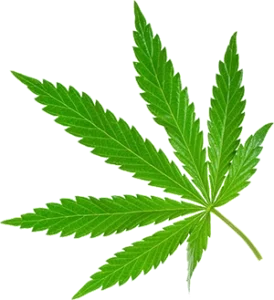Featured Products
CBD PRODUCTS


Be Pain Free Global is a trusted natural medicine provider making a difference in people’s lives worldwide.
Our reviews and testimonies speak for themselves. We focus on providing the best medicine and customer care for our clients
Learn more about our support process, how you can contact us at BPFG, and how we are here to help you.
We have a 10-business day replacement policy, and we take all inquires very seriously. We are committed to quality products for you.
The Ultimate Cannabis And Health Education Platform Presented By Be Pain Free Global.
At BPFG, we work hard on collecting relevant videos for cannabis consumer education.
Just cannabis? No. We are all about consciousness, vision, proper nutrition, and holistic health.
We have compiled great resources to help understand the benefits of cannabis for your health.
Check out what’s smoking on our strains and terpenes list. Featuring best strains curated by our editor.
Indica's are known for their calming and sedating properties, usually leading to munchies, and sleep.
Sativa's are known for their ability to produce energetic feelings and creating a positive uplifting euphoria.
Hybrids are a very popular with cannabis consumers due to the initial uplift followed by relaxation.
Every case is different and requires individualized care. We have some great tips for doctor reccomendations.
Join our collective with a valid California medical recommendation to gain access today
Get the details on how our affiliate program works and how you can benefit by referring others
Become a Be Pain Free Affiliate and earn lifetime commissions for your referrals

From Olympic Gold Medalist, Ross Rebagliati to WNBA star, Brittany Griner, many athletes across the board speak out about the benefits they’ve experienced with medical marijuana in alleviating sports injuries, chronic pain and anxiety. Professionals spanning many fields have been endorsing both medical marijuana as well as cannabinoid supplements and the testimony from these famous athletes has catapulted the discussion. “A recent meta-analysis of 11 studies representing over 46,000 athletes of varying age and ability suggests that 23% have used some form of cannabis in the past year.”
Brittany Grinder explained why it’s important for her to have accesses to medical marijuana. “There are injuries that I’ve had over the long career of basketball, from my spine to no cartilage in my knee and I was in a wheelchair for four months,” she said. “I broke my ankle and I also sprained my knee really bad. So, I was wheelchair-bound…the benefits from medical cannabis definitely outweigh the painkillers that they prescribe.” Many of the athletes express the same certainty that medical marijuana offers more relief and they prefer it over prescription painkillers that often come with harmful and unwanted side effects.
“Athletes and former athletes alike are using and promoting cannabinoids for treatment of a multitude of ailments and indications…” After his NFL retirement in 2001, Super Bowl champion, Mark Stepnoski, “became an outspoken legalization advocate who confirmed ‘responsible use’ of marijuana during his pro career. ‘After a game you need something to relax,’ Stepnoski stated, ‘I’d rather smoke than take painkillers.’”
How is medical marijuana useful for athletes?
Acute and chronic pain – medical marijuana is an effective analgesic and anti-inflammatory that eases pain during and after exercise. Medical marijuana rich in cannabinoids such as THC, CBD, CBG and CBN could be used as a frontline treatment for treating sports injuries.
Head Injuries/concussion/chronic traumatic encephalopathy (CTE)/traumatic brain injury (TBI) –
“An observational study of 538 patients with severe TBI showed that participants who tested positive for THC at the time of their TBI had a lower mortality rate.” Being that CBD is an anti-inflammatory, it can assist with protecting the brain, lungs and heart before and after surgery, which is why researchers hope to find conclusive evidence that cannabinoids are an effective treatment for sports concussions.
Muscle Spasms – spinal cord injuries, peripheral neuropathy, simple muscle strains and dehydration may all lead to spasticity. The antispasmodic cannabinoids in hemp-derived cannabis may offer athletes natural support to treat this condition.
Recovery – “Cannabis use, be it either cannabidiol (CBD) use and/or delta-9-tetrahydrocannabinol (THC), shows promise to enhance exercise recovery.”
Rest – Whether having an injury or not, athletes need plenty of rest. Having untamed adrenaline spiked with excitement prior to and throughout the games, they often seek therapeutic ways to relax when the thrill is gone. The athletes who advocate medical marijuana indicate that it offers effective support to help them relax and get to sleep.
As an alternative therapy, retired NFL players Eugene Moore and Jake Plummer, former professional cyclist Floyd Landis, and many other athletes have sought out the benefits of medical marijuana in hopes to avoid addictive pain killers like opioids. There are a vast array of cannabis products available that could support a healthy, athletic lifestyle and may provide pain relief.
Olympian and Ironman World Champion, Joanna Zeiger is the CEO of the Canna Research Foundation. After suffering a tragic, career-ending bike crash at her last championship event, she managed to leveraged her PhD in epidemiology into a post-triathlon career exploring the use of cannabis in endurance sports.
As she managed to live with severe pain, trying just about every treatment available to her, she found only limited and temporary relief. After exhausting her options, which included acupuncture, nerve blocks and physical therapy, she turned to medical marijuana. Committing to it, she went through trial and error with dosage until she landed on the right amount to treat her pain, nausea and insomnia.
This guideline is offered for athletes new to medical marijuana:

Be Pain Free Global Is A Recognized Leader In The Medical Cannabis Space. If you would like to learn more about Be Pain Free Global, how to get your medical recommendation, or how to join our collective, you can reach out to us via the chat button on our website, or call us at 1-888-420-3848.